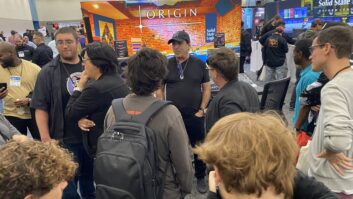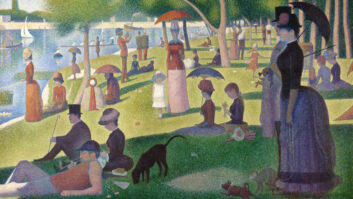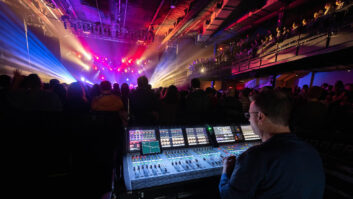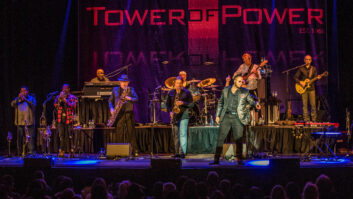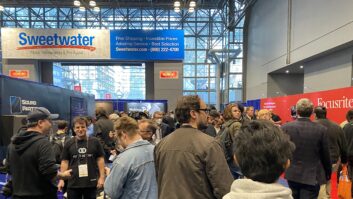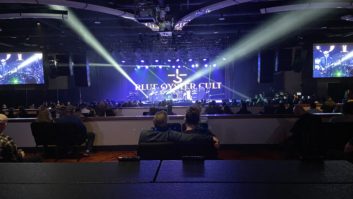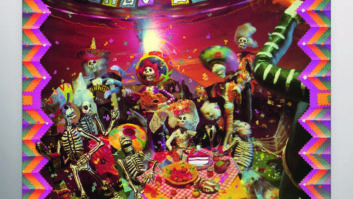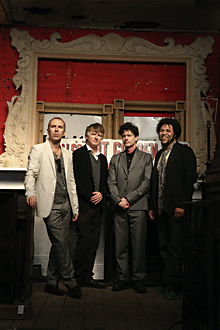

When Crowded House co-founder Neil Finn started working on a new album, he thought he was recording his next solo project, a follow-up to his own 7 Worlds Collide (2002). But life has a funny habit of evolving in ways we don’t expect. In this case, Finn’s intended solo material morphed into what would become Time on Earth, the first Crowded House studio album in 14 years. The winsome pop combo began their decade-long string of memorable singles in the late 1980s with such hits as “Better Be Home Soon,” “Don’t Dream It’s Over,” “Something So Strong,” “Weather With You” and “It’s Only Natural,” while even lesser-known albums such as Woodface (the first album to feature both Finn and brother Tim Finn, who joined the band for a short time in 1989) were critically well-received. Crowded House dissolved in the mid-1990s and the Finn brothers went on to release acclaimed albums both on their own and together as the Finn Brothers. (Their 2004 release, Everyone is Here, is especially sublime.)
After a lengthy hiatus, Time on Earth, released in July on ATO Records, brings founding members Neil Finn and bassist Nick Seymour back together, as well as former guitarist/keyboardist Mark Hart. Matt Sherrod assumes the role of original drummer Paul Hester, who passed away in 2005. The album is dedicated to Hester’s memory.
Crowded House today (L-R): Nick Seymour, Neil Finn, Mark Hart and Matt Sherrod
Photo: Kerry Brown
Produced and engineered by Ethan Johns and Steve Lillywhite, the album marks the first major production recorded at Finn’s recently completed Roundhead Studios, a spacious two-room facility in Auckland, New Zealand. Located in the converted Fountain of Friendship Lodge, a former Masonic Temple, Roundhead’s two main-floor studios were still under construction when Finn began fleshing out material, so he and the group retreated to the upstairs ballroom for the Johns-produced sessions. With albums from Ryan Adams, Kings of Leon, Rufus Wainwright and Ray LaMontagne to his credit, among others, Johns’ discography points to an inherent tendency to work with “artists who have something to say,” whether it’s under the guise of garage rock, sensitive singer/songwriter or a veteran melodic pop group such as Crowded House. Johns’ keen musical sensibilities and affinity for organic recording methods further enhanced what would become a creatively fruitful and educational partnership.
Finn and Johns had met years before onstage at Largo, a popular L.A. club that is home to producer/songwriter/performer Jon Brion’s Friday night performances, which regularly attract a mix of local luminaries and surprise guests. “I had always wanted to work with Neil because I was a big fan of his, as a writer and as an artist in general,” says Johns, “and this time, it just seemed like everything lined up and we were both ready to go ahead and do it.”
It turns out Finn had a similar appreciation for the young producer/drummer’s work. Over the years, he “became more enamored with the records Ethan had been making,” Finn says. “They seem to have a great sense of joy about them, but they also felt live to me — very classic record-making. You feel as though you’re listening to a record that’s incredibly modern but also totally timeless, which is kind of what we were after.”
For Time on Earth, the ensemble recorded very live and very fluidly. Johns played on, produced and engineered a large portion of the material, but also observed and learned from the musicians he was loosely guiding. At the end of the two-week pre-production session, he says, “I ended up with more questions than answers.” For Finn, that’s the beauty of the creative process. “Songs evolve through the recording, and sometimes that’s the bit about it I like the most,” he says. “It’s like the plan that goes wrong. I like that because it usually leads to somewhere better. I think if you start off with a song too stitched up, you’re a bit closed to the evolution that you might actually have. I’m always looking for a new angle on things from beginning to the end — the possibility of a transformation.”
The transformation from idea to finished form began during those first two weeks, and Johns recorded everything. A few trace elements from those initial run-throughs may have ended up on the final recordings, but after several arrangements and edits, the path becomes more difficult to trace. During the tracking sessions, one of two drummers (either Johns or New Zealand-based session musician Riki Gooch), bass, guitar and vocals were all set up in the Roundhead ballroom with nary a gobo between them, only a wall to separate the makeshift control room from the rest of the studio area. Johns usually spent more time in the studio than the control room, either playing a part or helping the group work through material. “It was a collaborative process on all levels,” he says. Finn’s son, Elroy Finn, even stopped by to add a few guitar parts.
“I found myself wearing several hats on this project,” says Johns. “I was often in the storm, if you will, cutting the tracks and trying to catch the same wave, and then storming back into the control room, listening to everything and trying to help the band focus on what was working and where the magic was in the take, as well as working on the arrangement and the song itself.”

In the control room, Johns settled in behind Roundhead’s Neve 8088 console, which arrived to the studio by way of Bearsville Studios in upstate New York and, earlier, The Who’s Ramport Studios in London. For most of Finn’s vocals, Johns used a Shure SM7. He miked the drums with a combination of Coles and Neumann U67s, although such decisions weren’t given much thought outside of choosing whatever mic worked best at any given time. Johns brought his Universal Audio 610 mic pre’s and used them often, although the classic Neve took on the brunt of the work.
Keeping in line with the band and the producer’s organic inclinations, they recorded onto a 16-track Ampex MM1200. “The nice thing about tape is the time it takes to wind back,” says Finn. “It gives you a little breath to consider what you just did and to get you ready for the next performance. It’s a little bit like e-mails versus letters. You can send e-mails that you regret when you read them the next day, whereas with letters you have time to reflect on your thoughts.” In the end, however, they did transfer the analog tracks to Pro Tools for editing and mixing.
With the 2-inch tape quietly whirling in the machine room, the band played off one another much like an improvisational jazz combo — very intuitively and never the same way twice. “It was a continual evolutionary process,” says Johns. “We’d work on a track for several days and end up losing everything. Neil might walk in, and say, ‘Let’s change everything.’ Or, ‘Let’s go back to the bass and acoustic guitar [from a previous take] or the bridge from three takes ago,’ then three hours later you’re in completely new territory. They’re constantly striving to see how far they can go and then coming back into the control room to see whether or not it works. We really ran the gamut, from completely live performances of songs that arrived almost complete with the whole band on the floor to things pieced together from different sets of recordings started a year before I even showed up. It was a fantastic experience for me, a great challenge.”
Once Finn and Johns finished the bulk of the overdubs and editing, they moved to Peter Gabriel’s Real World Studios in Bath, England, to mix most of the album. Johns then flew to L.A. for another project, and Finn and band commuted to RAK Studios in London to record the remaining tracks with producer Lillywhite and engineer Jonathan Schakhovskoy.
Lillywhite, known for his work with Gabriel, U2, Morrissey, Talking Heads and a host of others, complements Johns’ musical approach with his own keen sense for strong melodies and excellent vocal recordings. “Their producing styles are quite different,” says Finn, “but there’s a lot of mutual respect that runs between Ethan, Steve and Tchad [Blake, who mixed several songs at his Mongrel Studios]. It was a great meeting of the minds, and the different angles that were brought together made the record stronger.”
Finn had initially planned to record two songs with Lillywhite, but the band had such a good groove going that they ended up with four songs on tape. One reason for the burst of creative energy came from the addition of their new drummer, Matt Sherrod, as well as the return of Mark Hart, who had joined the group in 1993. The lineup felt more complete. It felt like Crowded House.
The band debuted their new material and reconfigured lineup at this summer’s Coachella Festival in Indio, Calif. “It feels right to us that the band should re-emerge at this time,” Finn said in a press statement. “We aim to make the new music as vital and spirited as what has come before.”
It seems they have succeeded. “Their records sound initially very simple because they’re so recognizable,” says Johns of the Crowded House catalog. “But there’s a tremendous sense of structure to what they do. They have these beautiful melodies, but when you pick up a guitar and try to play it, you realize how complex these arrangements are. Neil’s one of the finest talents around and can make the most complicated stuff sound so simple.”

LISTEN: Must Play
English Trees
LISTEN: Must Play
Nobody Wants To
LISTEN: Must Play
She Called Up
